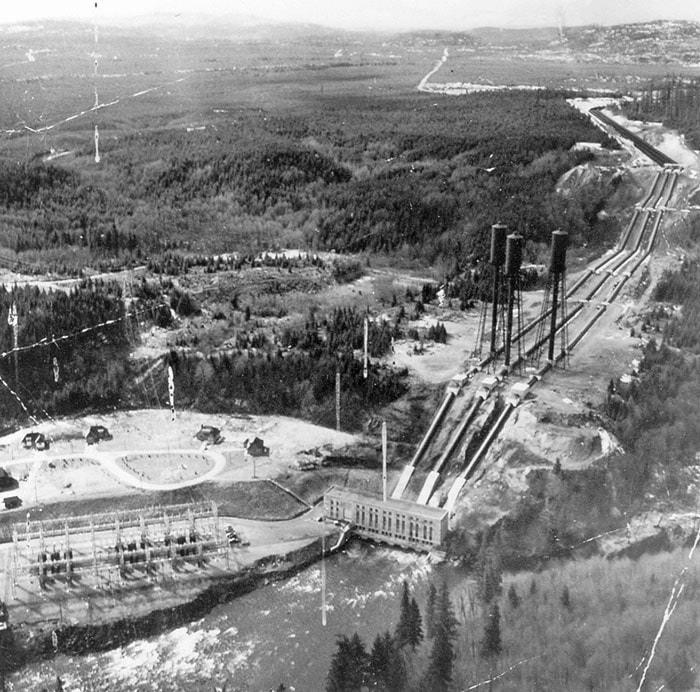Thelma Silkens
Museum at Campbell River
On Dec. 15, 1947, British Columbia Premier John Hart officially turned the switch to begin delivery of power from the new John Hart Dam situated on the Campbell River to residents of the Campbell River region.
As a 1997 newspaper article stated, that was the day the lights stopped flickering for area residents.
Before this development introduced 60-cycle power, the town depended on an overloaded 25-cycle supply from Vancouver Island Utilities, one of several small companies which bought power wholesale from the Puntledge River system to the south.
The Puntledge provided most of its power to the coal mining operations of Canadian Collieries (Dunsmuir) Ltd.
The project of harnessing power from the Campbell River water system began in 1945, soon after the BC Power Commission (later BC Hydro) was established to make electricity available for rural users and industries throughout the province.
The John Hart Dam was the first of three phases in a huge hydroelectric project that would eventually include three storage dams, three generating stations and three river diversions.
During the construction project, up to 450 men worked on the dam and power plant. The largest earth-moving job of the project was excavation for the 6,000 foot long wood-stave pipelines built to carry water from the dam to the generating station.
An engineer’s report from the time stated that enough Douglas fir lumber to build 40 houses went into the wood-stave pipe. It was made of 4-inch planks, dressed down, with tongues and grooves on the sides and ends.
When the project began, just two years after the end of World War II, housing was in very short supply; a supply that was only beginning to catch up with demand.
Housing and manufacture of automobiles, electrical appliances, furniture etc. had been put on hold while labour was diverted to the war effort.
To provide housing for its employees, the BC Power Commission built ten homes. The location of the homes was known as the John Hart Townsite; however, residents nicknamed it “Hydro Hollow.” An advantageous place for young families, with space for children to grow, it was unique in its existence.
Many felt that it was a good experience to live in such a small community.
After the project was completed, the houses were eventually sold and moved to other areas of Campbell River and vicinity, and Hydro Hollows became just a fond memory.
The hydroelectric power project left a last legacy in the Campbell River region.
It was the impetus for dramatic growth throughout the 1950s, especially when a pulp mill was constructed at Duncan Bay in 1952.
The village that was Campbell River bloomed into a town, and eventually became a city.
The Museum at Campbell River has created a new permanent exhibit in partnership with BC Hydro that tells the story of the building of the dams and how they significantly altered the Campbell River watershed, that has its start at Buttle Lake in Strathcona Provincial Park.
The exhibit includes a state of the art touch screen that can be tapped to access interviews and archival photos related to the construction of the dams.
